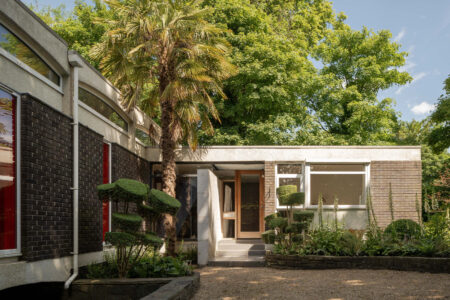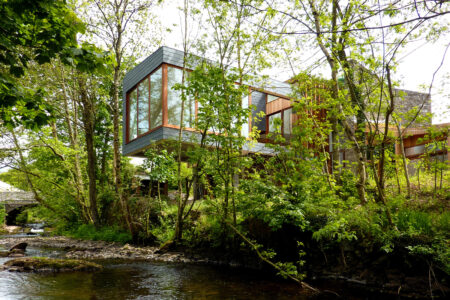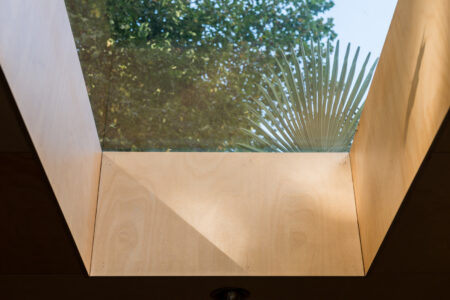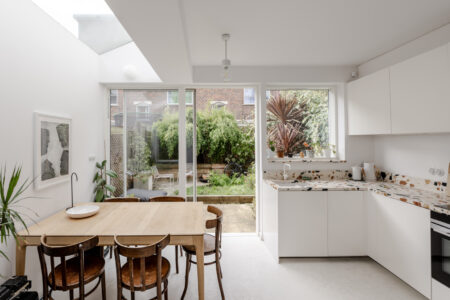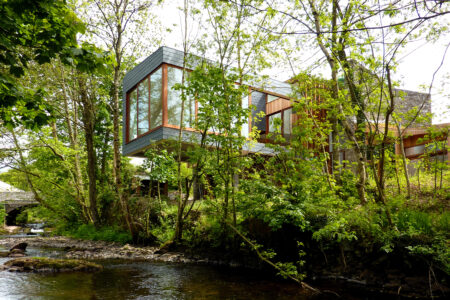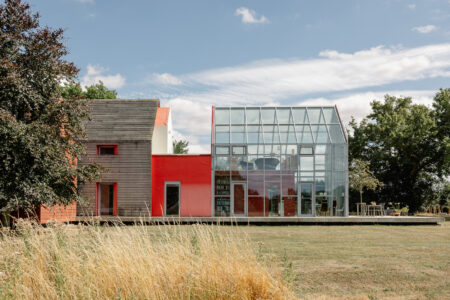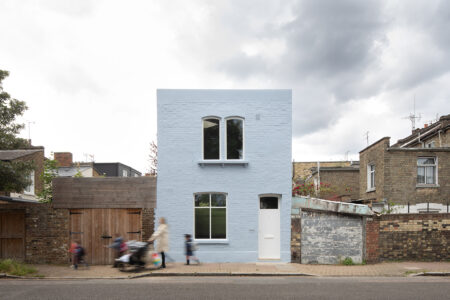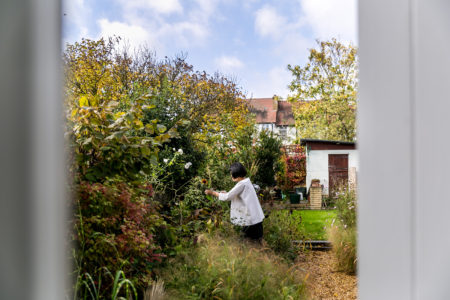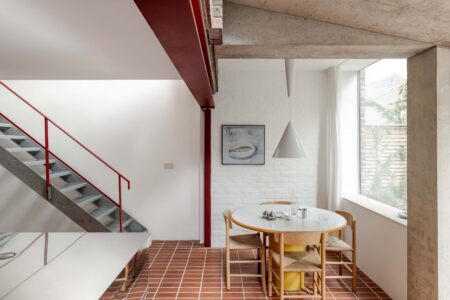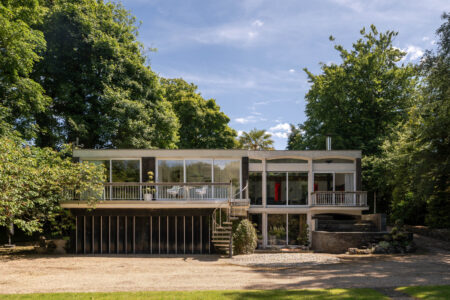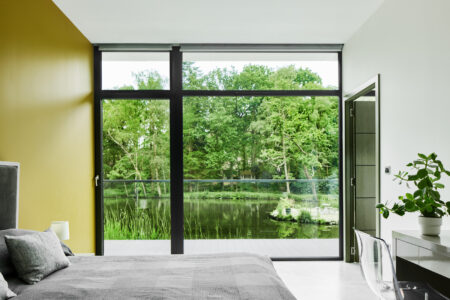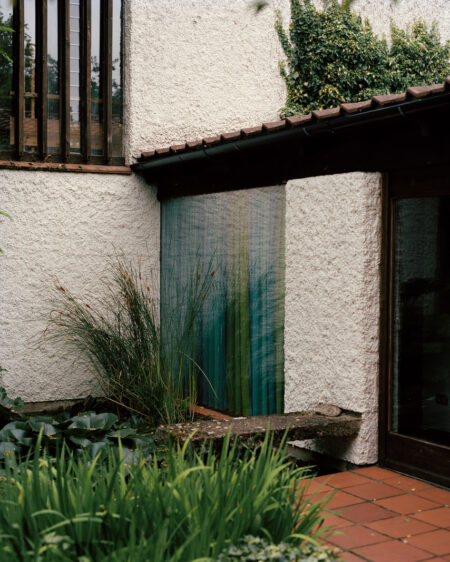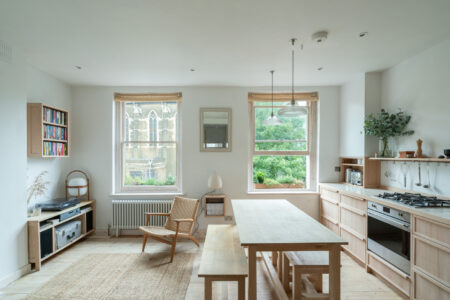Hot on the heels of modernity: how our heritage buildings are catching up with us
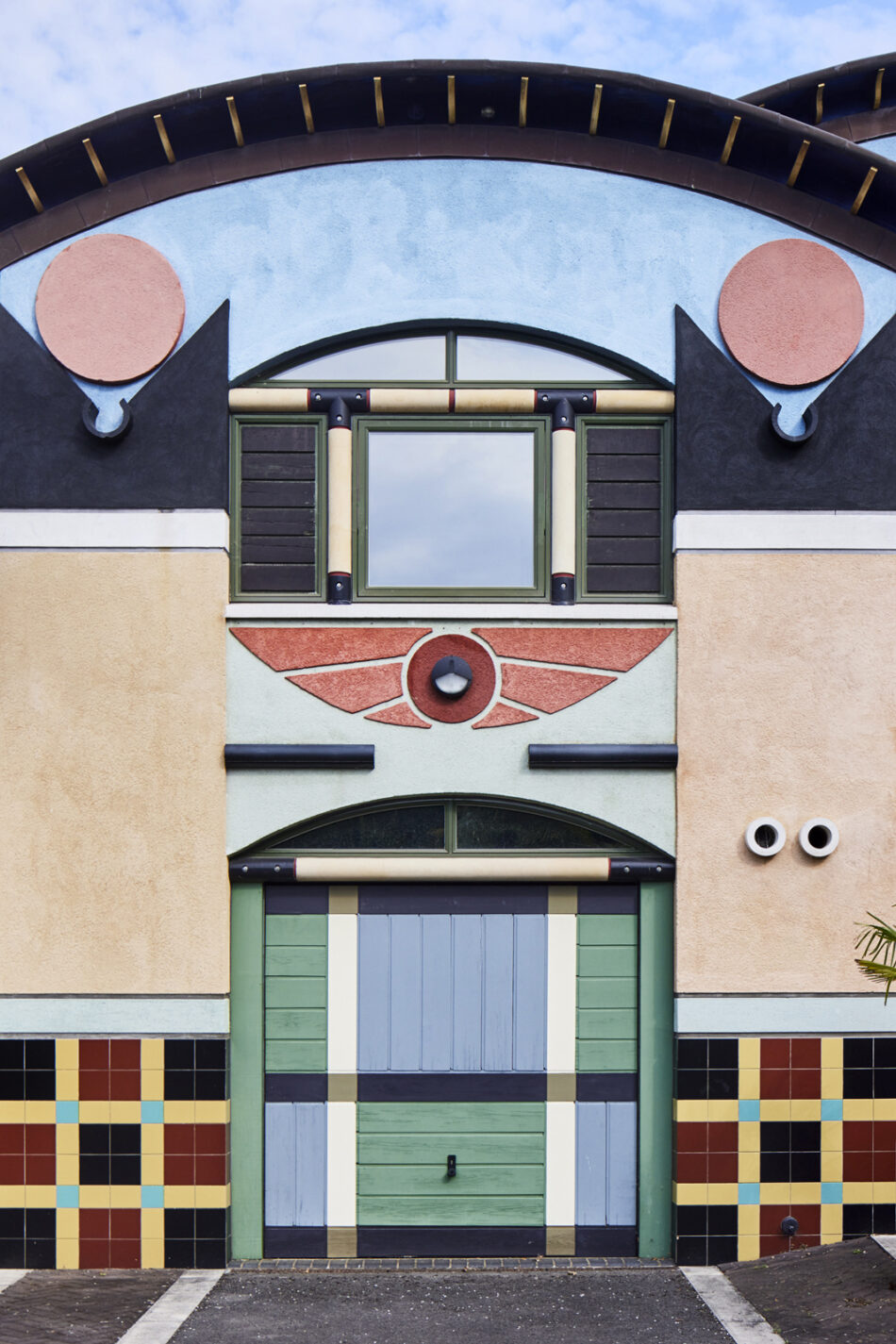

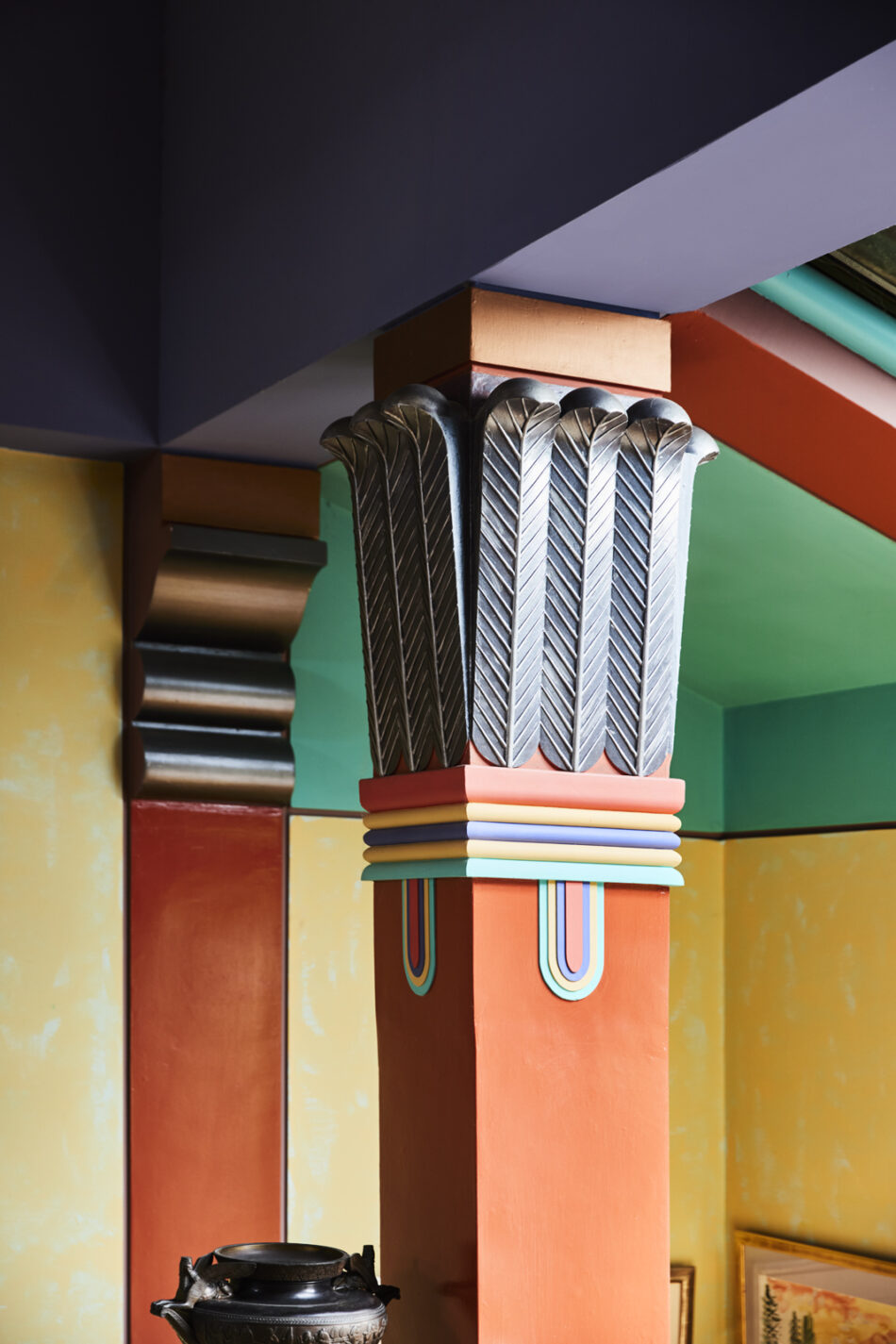

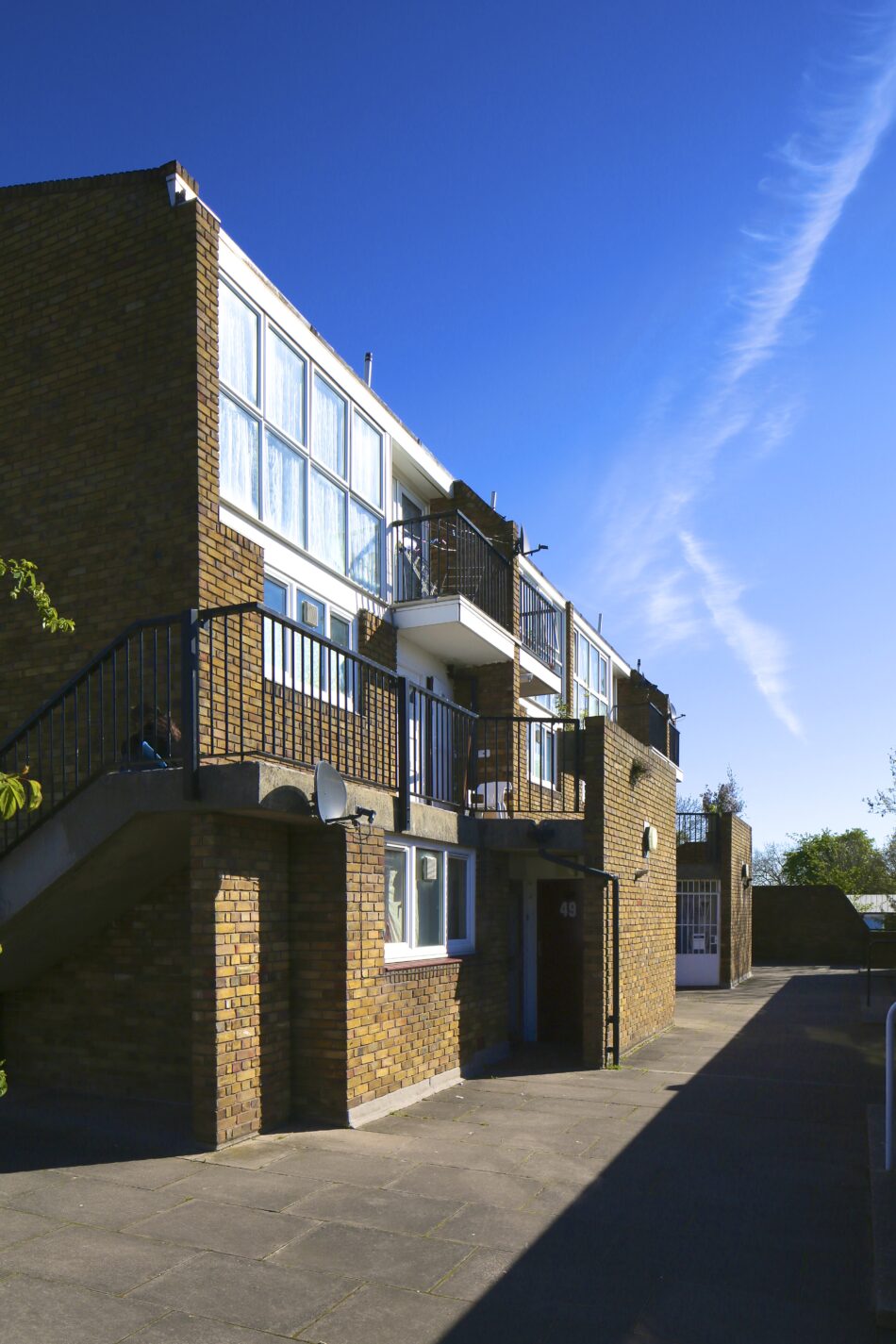
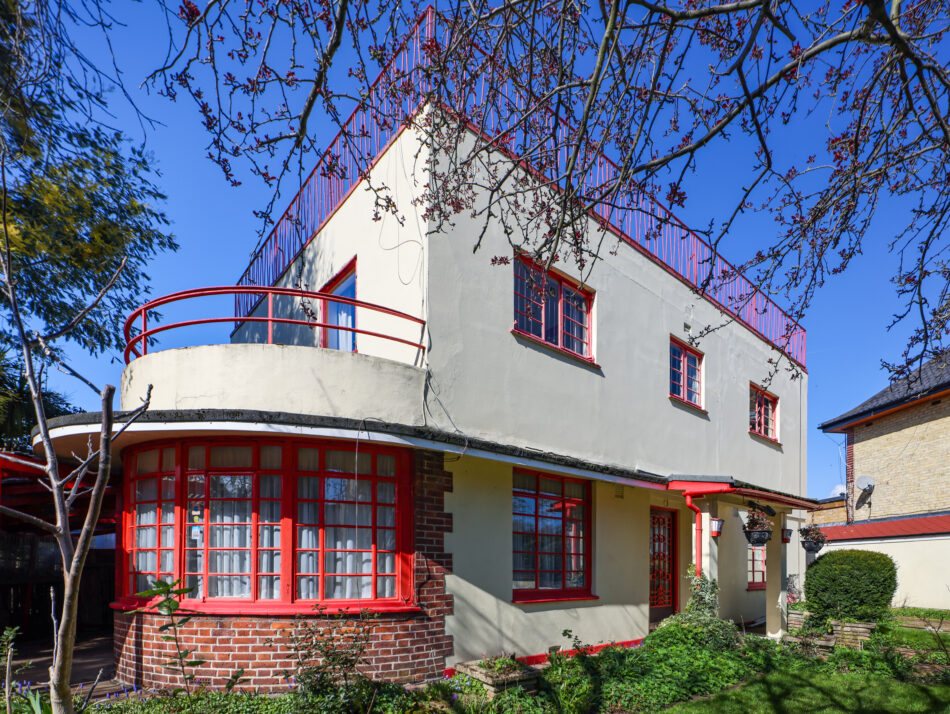
This summer, Sphinx Hill in Oxfordshire became Britain’s youngest listed building. Built in the late 90s, the listing was was the result of a successful application by the Twentieth Century Society. Its chairman Hugh Pearman suggests that it stands as a youthful reminder of where our heritage is headed: inexorably towards the present day …
Words Hugh Pearman
In 2001 I travelled to Sphinx Hill, the gleefully polychromatic neo-Egyptian house by the Thames in Oxfordshire that is – at the time of writing – the UK’s youngest listed building, designed by the architect John Outram. “Here, for one hallucinogenic moment, the Thames becomes the Nile” I wrote in The Sunday Times. “It is as if Kenneth Grahame had decided to set The Wind in the Willows in Luxor”.
The original owners were Henrietta and Christopher McCall, she a professional Egyptologist, he a barrister and enthusiast for all things Egyptian. They wanted this reflected in the design of their house, they knew Outram was an architect overflowing with ideas and keen on architectural symbolism, so off they all merrily went on their adventure. It was complete by 1999, and by the time I saw it its landscaped garden, with its central channel of flowing water, had filled out.
By 2022, the McCalls felt the need to downsize and sold up. The house fetched £2.3 million, a premium price at the time for a place of that size in the locality. This for what is in cold terms a medium-sized three-bedroom home, albeit one with its own enclosed black-mosaic, blue-vaulted swimming pool, super-jazzy bathroom, that wonderful formal garden and a prime Thames Valley location between Wallingford and Goring. But this is a three-bed home that is also a royal palace. It is all about scale, symbolism and ambition rather than size.
So, it’s a lush place. Looking at the photos you might expect it to hurt your eyes after a while. But no, you adjust to its richness quickly, inside and out. Especially out: even from the Thames Path, which runs past the foot of its garden, it is almost recessive. Outram liked to point out how it is the white-painted houses around here that stick out visually. On my visit in 2001 we drove to the other side of the valley and looked back: indeed, Sphinx Hill was effectively camouflaged in the landscape by its colour scheme – done in self-coloured render, no subsequent painting required – while its white neighbours were only too apparent.
It was the pending sale of the house that prompted the Twentieth Century Society to put it forward to Historic England for listing. It was important that such an individual work should have some statutory protection from any future insensitive or destructive alterations. Outram, now a chirpy 90, built relatively few buildings in his professional career but nearly all of those that survived, including a famous 1980s temple-like storm-water pumping station on London’s Isle of Dogs, were by this time already listed.
The rule is that a post-war building only becomes eligible for listing once it is 30 years old, except when it is exceptionally good and/or potentially threatened. Buildings are listed in three categories: Grade I, Grade II* and Grade II. Sphinx Hill duly entered the list at II*, usually reserved for much more historic dwellings, at the age of only 25. Another, much larger house by Outram – Wadhurst Park in Sussex for the Rausing family (1982-6 with later Outram additions), had been listed at Grade I in 2020, something incredibly rare for a relatively recent modern house.
The upshot of all this is that we now have in Sphinx Hill a listed building that is knocking on the door of the 21st century. It’s an important moment: what will be the first listed building of the new millennium? the Twentieth Century Society is also effectively the Twenty First Century Society: our official remit begins in 1914 when our friends in the Victorian Society (who also look after the Edwardian period) hand over the baton, and extends to the present day. We’re statutory consultees on any listed building in our expanding period, and – as here – put buildings forward for listing also. Beyond all that, we’re a membership organisation and educational charity with a strong campaigning record. Through our events, trips and publications we help people to appreciate the best buildings of our period, preserving them and, where necessary, adapting them for re-use.
That period covers a remarkable amount of stylistic variation, from Arts and Crafts and neoclassical via art deco and Tudorbethan to modernism in all its guises including brutalism and high tech, postmodernism and all the various revivals of these styles in the present day. Given which, we have to be stylistically neutral, or pluralist if you prefer: whatever the style of the building in question may be, our only criterion is that it has to be good. Such buildings tell stories of their time, of the people who made them and have used them, acquiring layers of meaning along the way.
Because some of the buildings we deal with are relatively recent, to some extent we have to work ahead of public taste. The recent past is always the least well regarded which means that buildings of 20-30 years old are the most vulnerable. But just as ornamental red-brick Victoriana was once despised, then recognised, and finally loved, so it goes for later styles: Odeon art deco of course, and the recent rises of brutalism and postmodernism to fashionability following their spells in the doldrums being prime examples. The interwar period is still far from safe: a fine art deco/moderne house in Dorchester Drive, Herne Hill, was threatened with demolition when it was sold in 2021 but after a campaign to save it, it received a protected Grade II-listed status.
We have a developing campaign, ‘Coming of Age’ which earmarks the best buildings in the UK which are coming up to 30 years old and which deserve to be listed as an insurance against thoughtless destruction. Houses on our radar include Future Systems’ wedge-shaped, highly glazed 1993 Hauer King house in Islington, one of that unique practice’s first built projects, and the 1994 Baggy House near Barnstaple in North Devon by Anthony Hudson, a remarkable synthesis of modernist and vernacular elements overlooking the sea.
Private homes are one thing, but we’re concerned with housing more generally, especially the best examples of postwar social housing estates that tend to be vulnerable to developers because money for their maintenance and repair is tight: densification can be fine when judiciously done, but not when long-established communities in well-designed homes are driven out as a consequence. Our annual ‘Risk List’ highlights some of those under threat, such as the high-density, low-rise Cressingham Gardens in Lambeth, built by Lambeth borough architects from 1967-79 as a reaction against the perceived problems of council tower blocks. It needs work: it does not need wholesale demolition and replacement.
For property owners, finding people like us activating to get their houses listed might sometimes seem unwelcome, obviously if they happen to be property developers wanting to demolish, but also if they are residents – new owners, perhaps – wanting to alter or extend. For sure, the game changes once a property becomes listed and you don’t have such a free hand. But we’d argue that having a listed house opens up access to expert advice – not least from us – as to the best way to preserve and enhance your property. That, in the end, enhances the value: though the readers of The Modern House are equally concerned, we find, with originality and authenticity. It’s a win-win.
Hugh Pearman, chair of the Twentieth Century Society, was architecture and design critic of The Sunday Times for 30 years and edited the RIBA Journal. His latest book, ‘About Architecture’, is published by Yale University Press.

